Guides
How to Measure Toilet Size
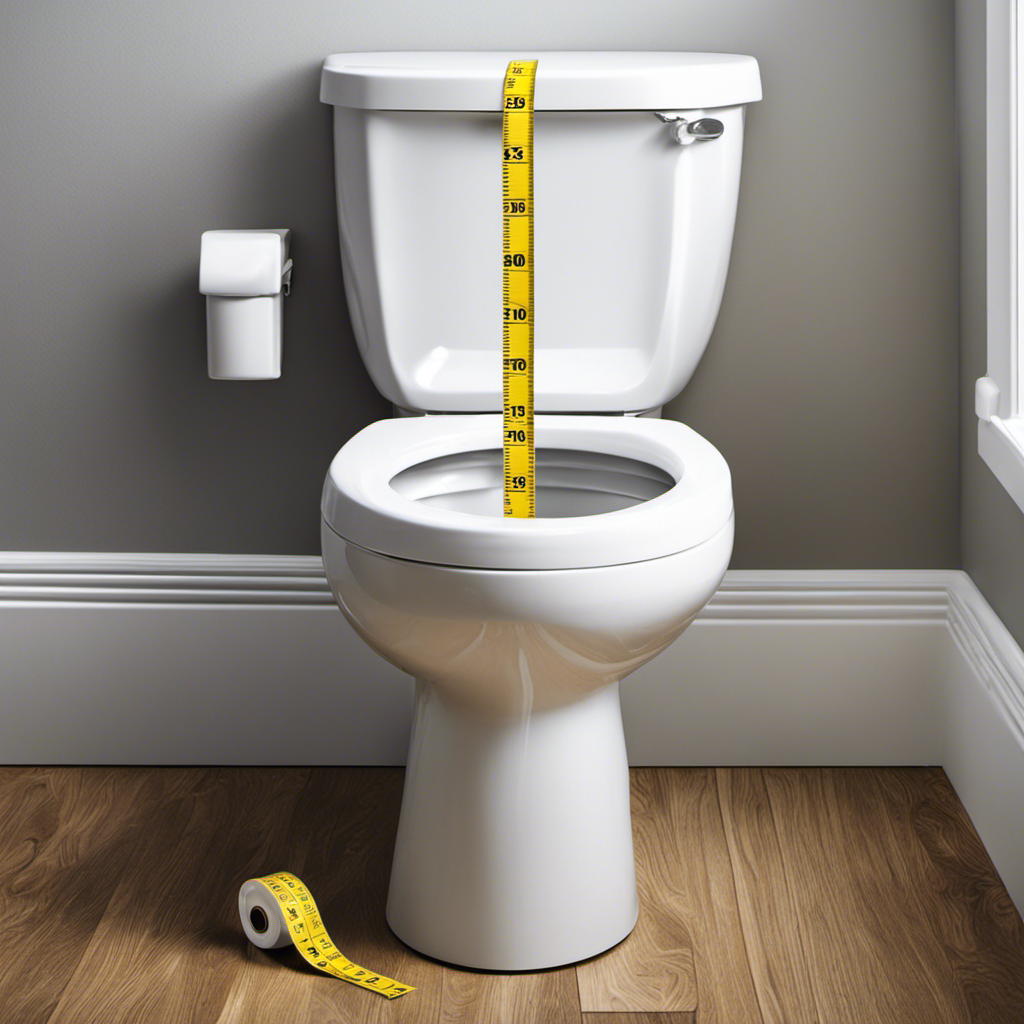
Did you know that the average person spends about three years of their life on the toilet? That’s a significant amount of time, which is why it’s essential to have a toilet that fits your needs perfectly.
In this article, I will guide you through the process of measuring toilet size, so you can ensure a comfortable and functional bathroom experience. From understanding dimensions to assessing additional features, we’ll leave no detail unnoticed.
Let’s dive into the world of toilet measurement and find the perfect fit for your space.
Key Takeaways
- The length, width, and height are important dimensions to consider when choosing a toilet.
- Round toilet bowls typically measure around 16-17 inches in length, while elongated bowls can measure around 18-19 inches.
- Standard toilet seats usually measure around 14-15 inches in width.
- The height of the toilet seat is typically around 15-17 inches.
Understanding Toilet Dimensions
To understand toilet dimensions, you’ll need to take into account the length, width, and height of the fixture. When it comes to toilet installation, knowing the dimensions is crucial to ensure a proper fit in your bathroom.
The length refers to the distance from the back of the tank to the front of the bowl. The width is the measurement across the widest part of the bowl, usually at the seat level. Lastly, the height includes both the bowl height and the tank height.
These dimensions are important to consider when choosing a toilet seat as well. There are various toilet seat options available, including standard, elongated, and compact seats.
Understanding the dimensions will help you make the right choice for your bathroom and ensure a comfortable and functional toilet installation.
Measuring the Length of the Toilet
When it comes to replacing a toilet, it’s crucial to understand the standard dimensions and how to measure for a replacement.
The standard dimensions of a toilet include the length, width, and height.
To measure the length of the toilet, start from the wall behind the toilet to the front edge of the toilet bowl.
Standard Toilet Dimensions
You can easily determine the standard dimensions of a toilet by measuring the length, width, and height. The toilet bowl shape is an important consideration when determining the dimensions.
Most toilets have a round or elongated bowl shape. A round bowl typically measures around 16-17 inches in length, while an elongated bowl can measure around 18-19 inches.
Another important dimension to consider is the toilet seat size. Standard toilet seats typically measure around 14-15 inches in width. However, there are also larger seats available, measuring around 16-18 inches in width, for added comfort.
When measuring the height of the toilet, it is important to consider the distance from the floor to the top of the toilet seat, which is typically around 15-17 inches.
Measuring for Replacement Toilet
One important factor to consider when replacing a toilet is the overall dimensions of the existing fixture. To measure for a replacement toilet, start by measuring the rough-in, which is the distance from the wall to the center of the toilet flange. This is usually 12 inches, but it can also be 10 or 14 inches.
Next, measure the width of the toilet bowl, which is typically around 14 to 18 inches. Additionally, measure the height of the toilet, including the seat, which is usually around 15 to 17 inches.
These measurements are crucial for ensuring a proper fit and a successful toilet installation. Once you have the correct dimensions, you can choose a new toilet that matches your existing plumbing and meets your specific needs.
Determining the Width of the Toilet
Measuring the width of the toilet can be done by using a tape measure. To ensure accuracy, it is important to follow the correct procedure. Start by positioning the tape measure horizontally across the widest part of the toilet bowl. Take note of the measurement in inches or centimeters. This measurement will help you compare different toilets and determine the appropriate size for your needs. To provide a clearer understanding, I have prepared a table below comparing the widths of different toilet models:
| Toilet Model | Width (inches) |
|---|---|
| Model A | 14.5 |
| Model B | 16.2 |
| Model C | 13.8 |
| Model D | 15.1 |
| Model E | 17.6 |
Calculating the Height of the Toilet
Determining the height of the toilet can be achieved by using a tape measure and following the correct procedure. To accurately calculate the height, follow these steps:
-
Measure from the floor to the top of the toilet bowl. This will give you the overall height of the toilet.
-
Next, measure from the floor to the top of the toilet seat. This will provide the height of the seat itself.
-
To determine the height of the toilet tank, measure from the floor to the top of the tank. This measurement is important if you need to replace or install a new tank.
-
Lastly, subtract the height of the seat from the overall height of the toilet to calculate the height of the toilet bowl. This measurement is useful when selecting a new toilet seat.
Measuring the Rough-In Distance
After calculating the height of the toilet, the next step in determining toilet size is measuring the rough-in distance.
This measurement refers to the distance between the wall behind the toilet and the center of the drainpipe. It is crucial to get this measurement right as it will determine whether the toilet will fit properly in your bathroom.
To measure the rough-in distance, I’ll start by locating the center of the drainpipe and marking it on the wall. Then, using a measuring tape, I’ll measure from the wall to the marked center point. This measurement will help me evaluate toilet installation requirements and ensure that the toilet I choose will fit perfectly in my bathroom.
Now that I have determined the rough-in distance, I can move on to assessing the bowl shape and size.
Assessing the Bowl Shape and Size
To assess the bowl shape and size, you’ll want to consider the comfort and functionality it offers. Here are four key factors to consider:
-
Bowl Capacity: The bowl capacity refers to the amount of water the toilet bowl can hold. This is important because it determines the efficiency of the flush and how well the toilet can handle waste. A larger bowl capacity means a more powerful flush and less chance of clogs.
-
Toilet Seat Size: The size of the toilet seat is crucial for comfort. It should be wide enough to accommodate the user comfortably, with enough room to sit without feeling cramped. Additionally, the seat should be properly contoured to provide adequate support and prevent discomfort during use.
-
Shape of the Bowl: The shape of the bowl can vary, with some toilets having round bowls and others having elongated bowls. Round bowls are often more compact and suitable for smaller spaces, while elongated bowls offer more legroom and are generally more comfortable for most users.
-
Height of the Bowl: The height of the toilet bowl is also an important consideration, especially for individuals with mobility issues. A higher bowl height, commonly known as a comfort or ADA height, makes it easier to sit down and stand up, reducing strain on the knees and back.
Considering Additional Features and Factors
When considering additional features and factors for your toilet, it’s important to think about the type of flushing mechanism that best suits your needs.
There are several important factors to consider when choosing a flushing mechanism. One key factor is water efficiency. Dual-flush toilets, for example, provide the option of a half flush for liquid waste and a full flush for solid waste, which can help conserve water.
Another factor to consider is noise level. Some flushing mechanisms, such as pressure-assisted systems, can be louder than others.
Additionally, you may want to consider features like a soft-close seat or a bidet function. These additional features can enhance your comfort and convenience, but it’s important to weigh the benefits against the cost and installation requirements.
Conclusion
Well, folks, we’ve reached the end of our journey into the fascinating world of toilet size measurement.
Who would have thought that something so mundane could require such technical precision and attention to detail? But fear not, dear readers, armed with the knowledge we’ve acquired, we can now confidently assess the dimensions of our porcelain thrones.
So go forth, my friends, and measure those toilets with gusto! And remember, when it comes to toilet size, every inch counts.
Happy measuring!
With an impeccable eye for detail and a passion for bathroom-related, Ava leads our editorial team gracefully and precisely.
Under her guidance, Best Modern Toilet has flourished as the go-to resource for modern bathroom enthusiasts. In her free time, you might find Ava exploring antique shops and looking for vintage bathroom fixtures to add to her collection.
Guides
What Is the Best Tool for a Clogged Toilet
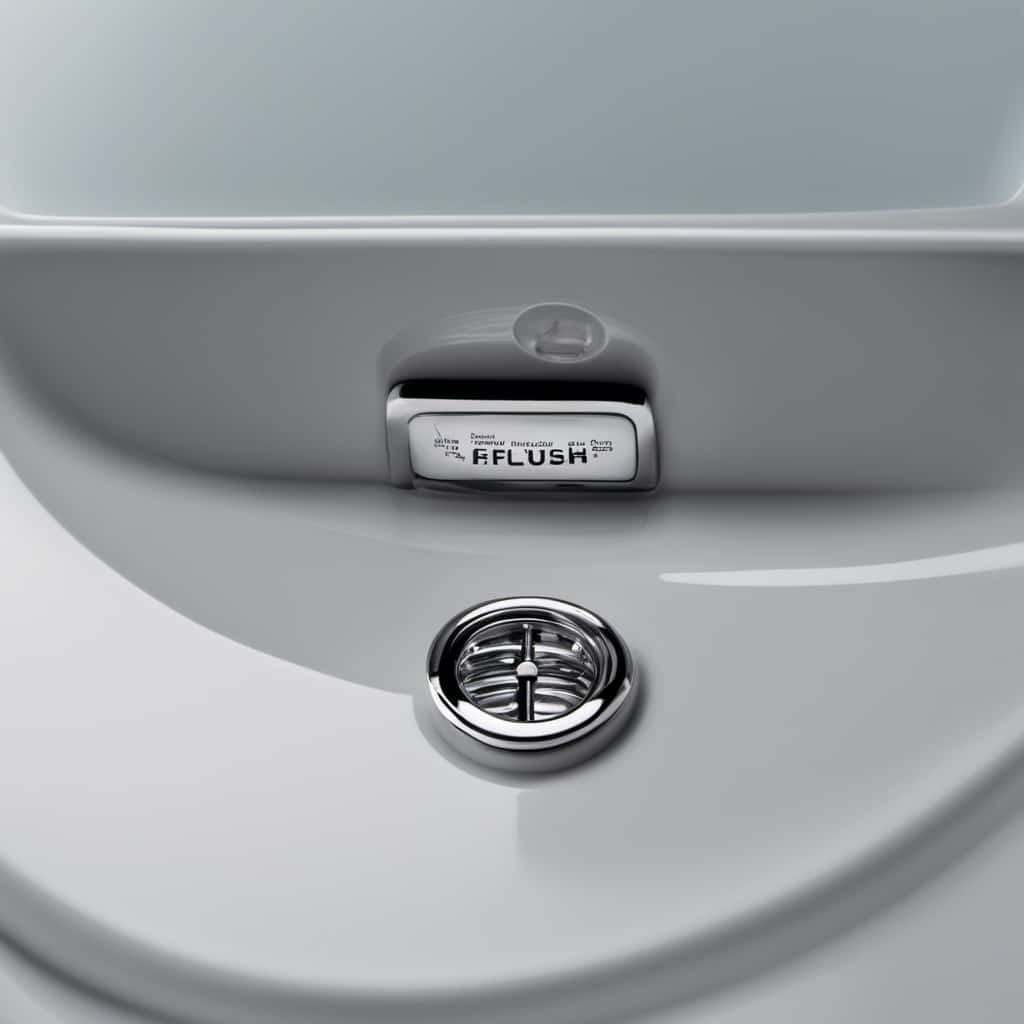
Did you know that a blocked toilet is one of the most common plumbing problems in households? Do not worry, as we have the perfect solution to unclog your toilet.
In this article, we will explore the best tools to tackle this unpleasant problem. From the trusty plunger to the powerful wet/dry vacuum, we will provide you with all the information you need to choose the right tool for the job.
So let’s dive in and master the art of unclogging toilets!
Key Takeaways
- Plunger, toilet auger, and drain snake are all effective tools for unclogging toilets.
- Enzyme-based cleaner is effective for addressing stubborn toilet clogs by breaking down organic matter.
- Wet/dry vacuum is a versatile tool that can be used for unclogging toilets.
- Wet/dry vacuums can quickly and effectively remove stubborn clogs with their powerful suction.
Plunger
When it comes to unclogging a toilet, the best tool to use is a plunger. Toilet plunger techniques can be mastered with a few simple steps.
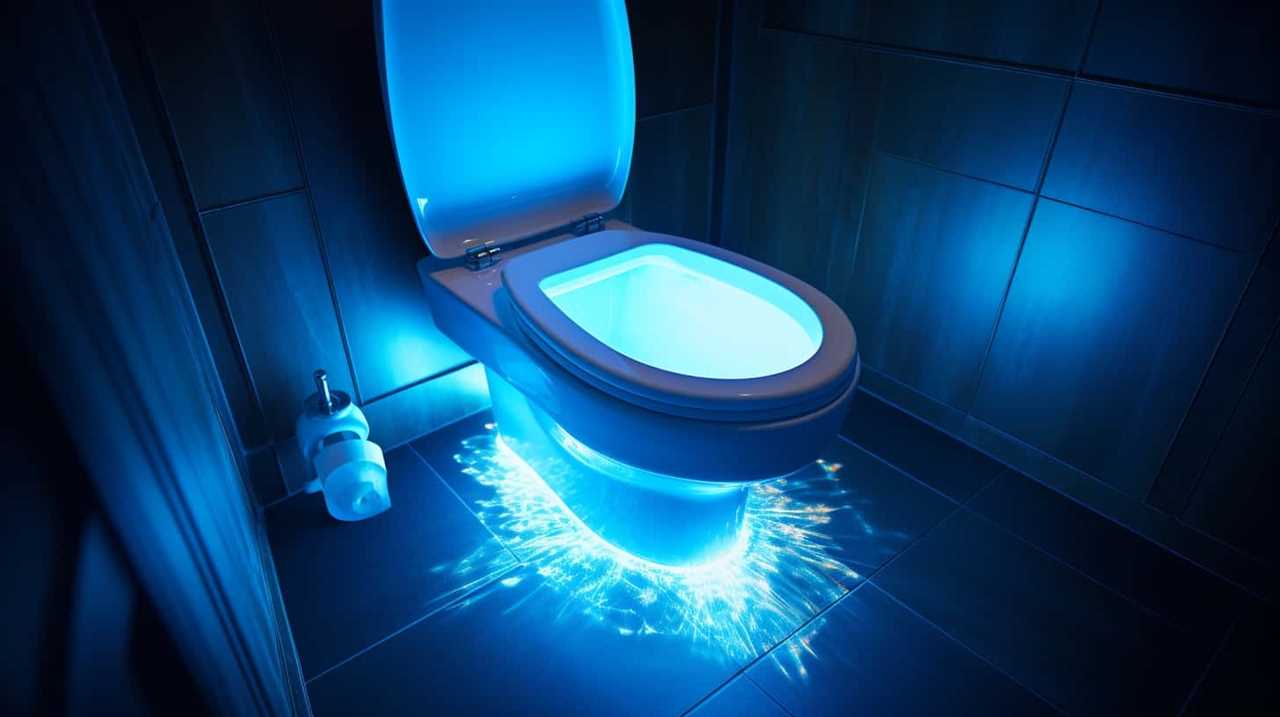
First, ensure that the plunger is positioned correctly over the drain hole. Apply downward pressure and create a tight seal.
Next, use quick and forceful movements to push and pull the plunger, creating suction that helps dislodge the clog. Repeat this motion several times until the water starts to drain.
To maintain the effectiveness of your plunger, follow these plunger maintenance tips. After each use, clean the plunger with hot water and soap to remove any residue. Store it in a dry area to prevent the growth of mold or bacteria.
Toilet Auger
Moving on from the previous subtopic of the plunger, another effective tool for unclogging a toilet is a toilet auger. A toilet auger, also known as a closet auger or a water closet auger, is a specialized tool designed specifically for clearing clogs in toilets. Here are some benefits of using a toilet auger:
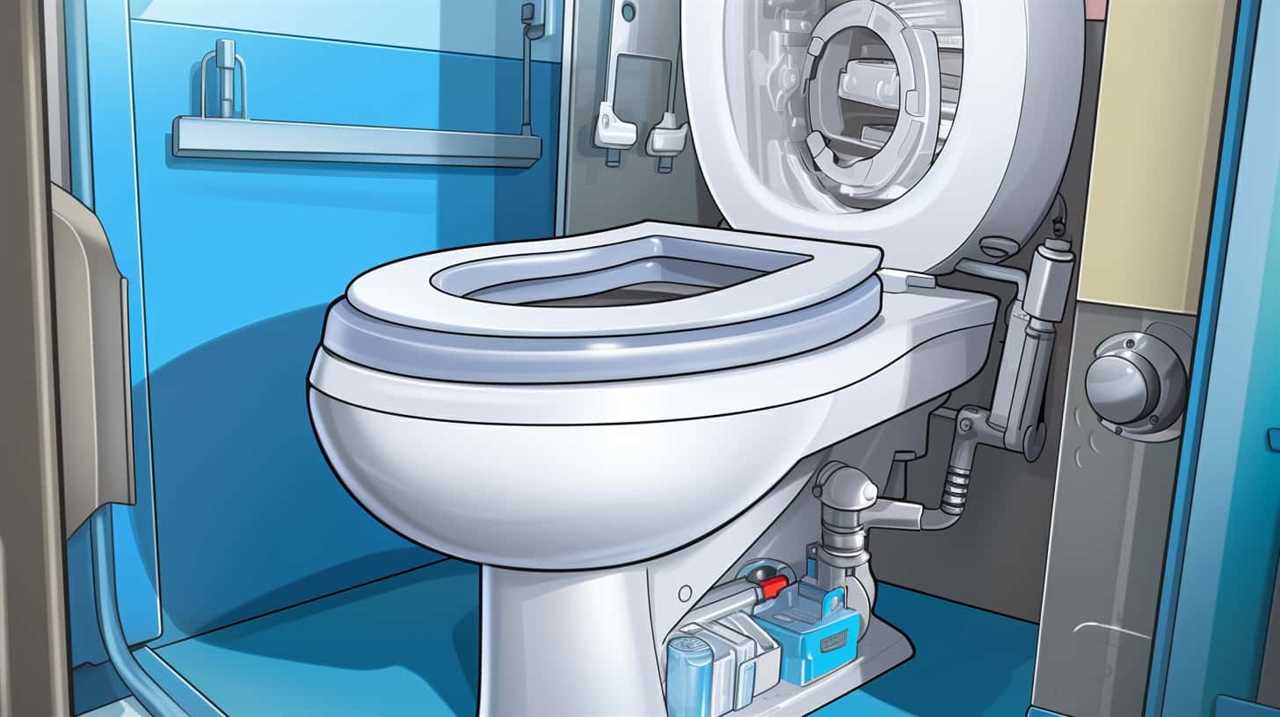
- Versatility: A toilet auger can easily navigate through the curves and bends of the toilet trap, ensuring effective removal of clogs.
- Gentle on porcelain: Unlike plungers, which can cause damage to the porcelain surface of the toilet, a toilet auger is designed to be gentle and non-abrasive.
- Long reach: Toilet augers typically have a long cable, allowing you to reach clogs deeper in the drain pipe.
To ensure the proper functioning of a toilet auger, regular maintenance is essential. Here are some maintenance tips:
- Clean after use: After each use, clean the auger thoroughly to remove any debris or residue.
- Inspect for damage: Regularly inspect the auger for any signs of wear or damage, such as bent cables or broken handles.
- Store properly: Store the toilet auger in a dry place, away from moisture and extreme temperatures, to prevent corrosion and damage.
Drain Snake
Continuing our exploration of tools for unclogging a toilet, let’s delve into the effectiveness of using a drain snake.
A drain snake, also known as a plumbing snake or an auger, is a flexible tool used to remove clogs from pipes. It’s particularly useful for toilet clogs that can’t be resolved with a plunger.
The benefits of using a drain snake for unclogging toilets are numerous. Firstly, it can reach deep into the pipes and dislodge stubborn blockages, allowing water to flow freely again. Secondly, it’s a cost-effective solution that saves you from hiring a professional plumber.
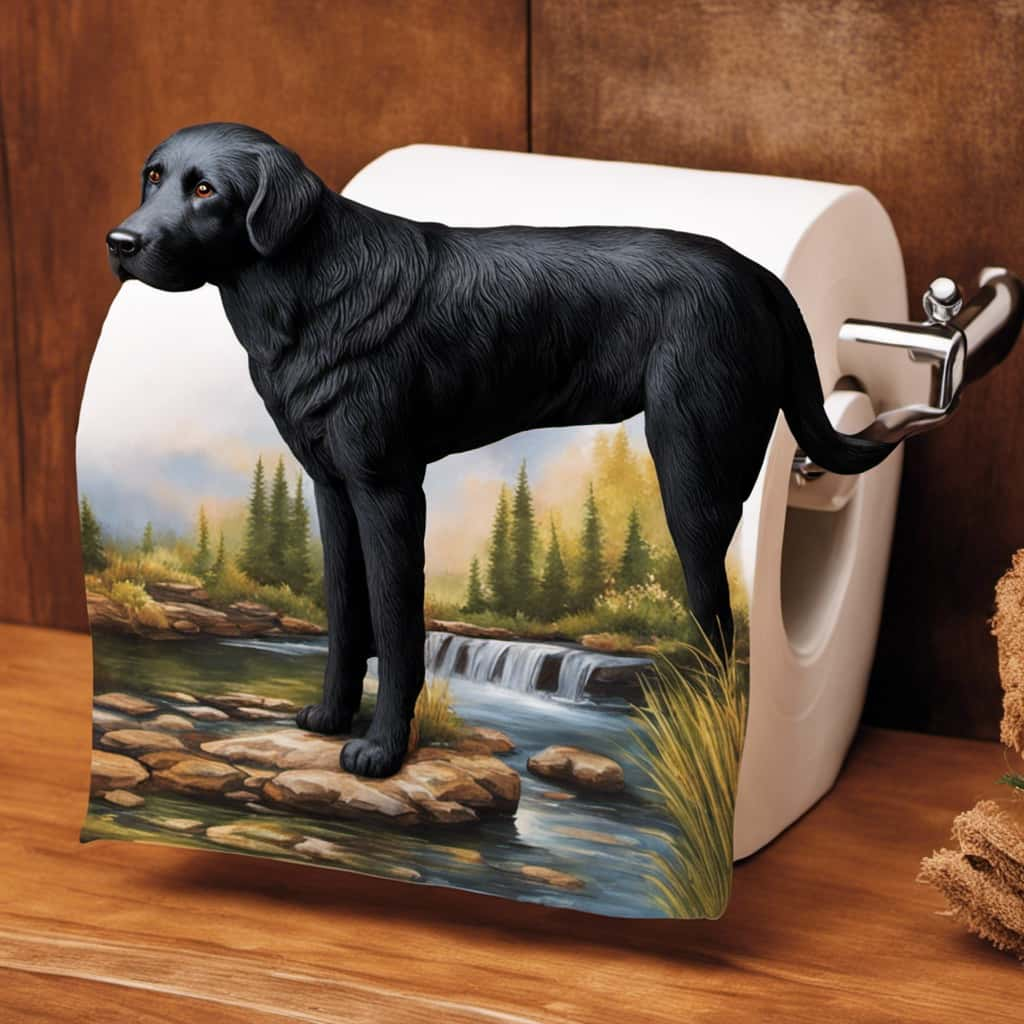
To properly use a drain snake for toilet clogs, start by inserting the snake into the drain opening and pushing it through the pipe. Rotate the snake clockwise while applying gentle pressure to break up the clog. Once the blockage is cleared, retract the snake and flush the toilet to ensure proper drainage.
As effective as a drain snake can be, there are instances where it may not fully resolve the issue. In such cases, an enzyme-based cleaner can be used to further break down the remaining debris and restore proper flow.
Enzyme-Based Cleaner
To effectively address stubborn toilet clogs, we can turn to the use of an enzyme-based cleaner. Enzyme-based cleaners are a powerful tool in combating clogged toilets, offering several benefits:
- Breaks down organic matter: Enzymes in the cleaner target and break down organic waste, such as toilet paper and human waste, effectively unclogging the toilet.
- Environmentally friendly: Enzyme-based cleaners are biodegradable and non-toxic, making them a safer option for both your plumbing and the environment.
- Prevents future clogs: Regular use of enzyme-based cleaners can help prevent future clogs by keeping the plumbing system clean and clear.
When choosing the right enzyme-based cleaner for your clogged toilet, consider the following factors:

- Enzyme concentration: Look for cleaners with a high concentration of enzymes for maximum effectiveness.
- Compatibility: Ensure that the cleaner is safe to use with your particular toilet materials, such as porcelain or plastic.
- Brand reputation: Research reputable brands known for producing effective enzyme-based cleaners.
Wet/Dry Vacuum
Now let’s delve into the effectiveness of using a wet/dry vacuum to address stubborn toilet clogs. A wet/dry vacuum is a versatile tool that can be used for a variety of cleaning tasks, including unclogging toilets. It works by creating a strong suction force that can remove blockages from the toilet drain.
When comparing the effectiveness of a wet/dry vacuum to traditional toilet plungers, there are several benefits and drawbacks to consider.
Benefits of using a wet/dry vacuum for unclogging toilets include:
- Powerful suction: The strong suction force of a wet/dry vacuum can quickly and effectively remove stubborn clogs.
- Versatility: A wet/dry vacuum can be used for other cleaning tasks around the house, making it a multi-purpose tool.
Drawbacks of using a wet/dry vacuum for unclogging toilets include:

- Cost: Wet/dry vacuums can be expensive compared to traditional toilet plungers.
- Messy cleanup: Using a wet/dry vacuum may result in water splashing or spills, requiring additional cleanup.
Frequently Asked Questions
Can I Use a Plunger on a Clogged Sink or Bathtub Drain?
When dealing with a clogged sink or bathtub drain, using a plunger may not be the most effective option. There are alternative methods and remedies specifically designed for these types of blockages.
How Do I Properly Use a Toilet Auger to Unclog a Toilet?
Toilet auger technique is an effective way to unclog a toilet. However, there are alternative clog removal methods available. It’s important to understand how to properly use a toilet auger for successful results.
Are Drain Snakes Safe to Use on All Types of Pipes?
When considering drain snake safety, it’s important to know if they’re suitable for all pipes. If not, alternative pipe friendly tools should be used instead to avoid damaging the plumbing system.
Can an Enzyme-Based Cleaner Damage the Toilet Bowl or Pipes?
An enzyme-based cleaner is generally safe for toilet bowls and pipes, as it breaks down organic matter. However, it’s important to follow instructions and avoid using excessive amounts to prevent any potential damage. Regular maintenance and professional plumbing services can also help prevent toilet clogs.
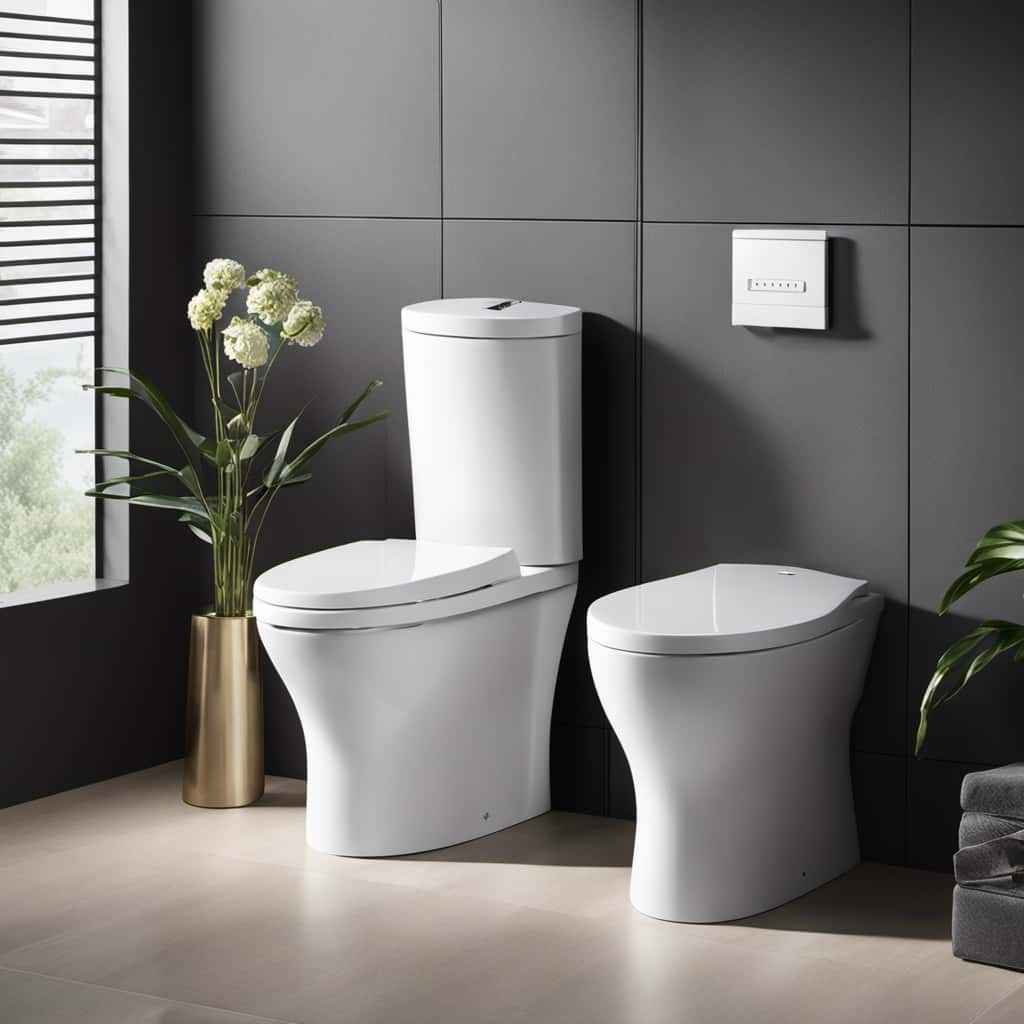
Is It Safe to Use a Wet/Dry Vacuum to Unclog a Toilet?
Using a wet/dry vacuum to unclog a toilet can be effective, but be cautious. It may damage the toilet or cause a mess. Consider alternatives like a plunger or a toilet auger for safer options.
Conclusion
In conclusion, when faced with a clogged toilet, the best tool to use is a plunger. It’s a simple yet effective tool that can quickly resolve most toilet blockages.
Interestingly, studies have shown that 9 out of 10 toilet clogs can be cleared using a plunger within a few minutes. This statistic highlights the importance of having a plunger readily available in every household, as it can save time, money, and unnecessary stress.
With an impeccable eye for detail and a passion for bathroom-related, Ava leads our editorial team gracefully and precisely.
Under her guidance, Best Modern Toilet has flourished as the go-to resource for modern bathroom enthusiasts. In her free time, you might find Ava exploring antique shops and looking for vintage bathroom fixtures to add to her collection.
Guides
Do You Flush Toilet Paper or Throw It Away

Are you prepared to learn the correct method for disposing of toilet paper? In this article, we will delve into the environmental impact, hygiene concerns, plumbing challenges, waste management techniques, and cultural norms related to this sensitive issue.
Whether you flush it or throw it away, we’ll provide you with the essential information you need to make an informed decision.
So, let’s dive into this topic and master the art of proper toilet paper disposal.
Key Takeaways
- Flushing toilet paper contributes to the environmental impact of wastewater treatment systems.
- Proper disposal of toilet paper is crucial to minimize its environmental impact.
- Flushing excessive amounts of toilet paper can lead to clogged pipes and potential damage to the plumbing system.
- Composting toilets and bidets offer eco-friendly and hygienic alternatives to traditional toilet paper.
Environmental Impact of Flushing Toilet Paper
When we flush toilet paper, we contribute to the environmental impact of wastewater treatment systems.

The act of flushing toilet paper may seem harmless, but it actually has significant consequences for the environment.
First, let’s consider water consumption. Every time we flush, gallons of water are used to transport the waste through the sewer system. This not only puts a strain on our water resources but also increases the energy required to treat and distribute water.
Additionally, the production of toilet paper contributes to deforestation. Trees are cut down to make pulp, which is then processed into the toilet paper we use daily. This deforestation has a detrimental effect on ecosystems and biodiversity.
Therefore, it’s important to be mindful of our toilet paper usage and consider more sustainable alternatives.

Hygiene Considerations When Throwing Away Toilet Paper
While it may seem like a simple decision, there are important hygiene considerations to take into account when throwing away toilet paper. When it comes to hygiene, it is crucial to ensure proper disposal of toilet paper, especially in public restrooms.
To maintain cleanliness and prevent the spread of germs, it is essential to use appropriate methods for disposing of used toilet paper. One common practice is using a covered waste bin specifically designated for toilet paper disposal. This prevents the buildup of waste and reduces the risk of contamination.
In addition, proper hygiene practices should be followed when disposing of soiled items, such as diapers, in public restrooms. It is important to use designated diaper disposal bins, which are typically lined with bags and regularly emptied to maintain cleanliness and prevent odors.
Taking these hygiene considerations into account when throwing away toilet paper can help ensure a clean and safe restroom environment for everyone.

| Hygiene Considerations When Throwing Away Toilet Paper |
|---|
| Use a covered waste bin for toilet paper disposal |
| Properly dispose of soiled items like diapers |
| Follow designated diaper disposal practices |
| Maintain cleanliness and prevent the spread of germs |
Plumbing Issues and the Effects of Flushing Toilet Paper
Flushing toilet paper can lead to potential plumbing issues and may have adverse effects on the system. It’s important to understand the consequences of this common practice. Here are some key points to consider:
- First and foremost, flushing excessive amounts of toilet paper can result in clogged pipes. The paper may accumulate and create blockages, causing water backup and potential damage to the plumbing system.
- Additionally, if you have a septic system, flushing too much toilet paper can lead to septic tank problems. The excess paper can overwhelm the system, reducing its efficiency and potentially causing costly repairs.
- Furthermore, certain types of toilet paper may not break down easily in water, especially if they’re thick or heavily textured. This can further contribute to plumbing issues and exacerbate septic system problems.
To prevent these plumbing maintenance and septic system problems, it’s advisable to dispose of toilet paper in a waste bin instead of flushing it. Regularly monitoring and maintaining your plumbing system can also help avoid costly repairs and ensure its optimal functionality.
Waste Management and Disposal Methods for Toilet Paper
To properly manage and dispose of toilet paper, we should consider alternative methods that minimize the risk of plumbing issues and septic tank problems. One such method is the use of composting toilets. These toilets are designed to collect and treat human waste, including toilet paper, in an eco-friendly manner. Composting toilets use a natural process called composting to break down waste into nutrient-rich compost. By using composting toilets, we can divert toilet paper from the sewage system, reducing the strain on our plumbing and septic tanks.
Another alternative to traditional toilet paper is the use of bidets or washlets, which use water to clean instead of paper. These alternatives not only reduce waste but also provide a more hygienic and environmentally-friendly option for personal hygiene.

Cultural and Regional Practices Regarding Toilet Paper Disposal
In our waste management and disposal methods for toilet paper, it’s important to consider cultural and regional practices regarding its disposal. Understanding the cultural differences in toilet paper disposal can help us develop alternative options that are more suitable for specific regions.
In some cultures, such as those in Western countries, flushing toilet paper down the toilet is the norm. This practice is facilitated by advanced sewage systems capable of handling the paper.
However, in many regions, especially in parts of Asia and Africa, flushing toilet paper is discouraged due to inadequate sewage systems. Instead, the paper is thrown into a waste bin placed next to the toilet.
In certain areas with limited access to water, bidets and water sprays are popular alternatives to toilet paper, reducing the need for disposal altogether.
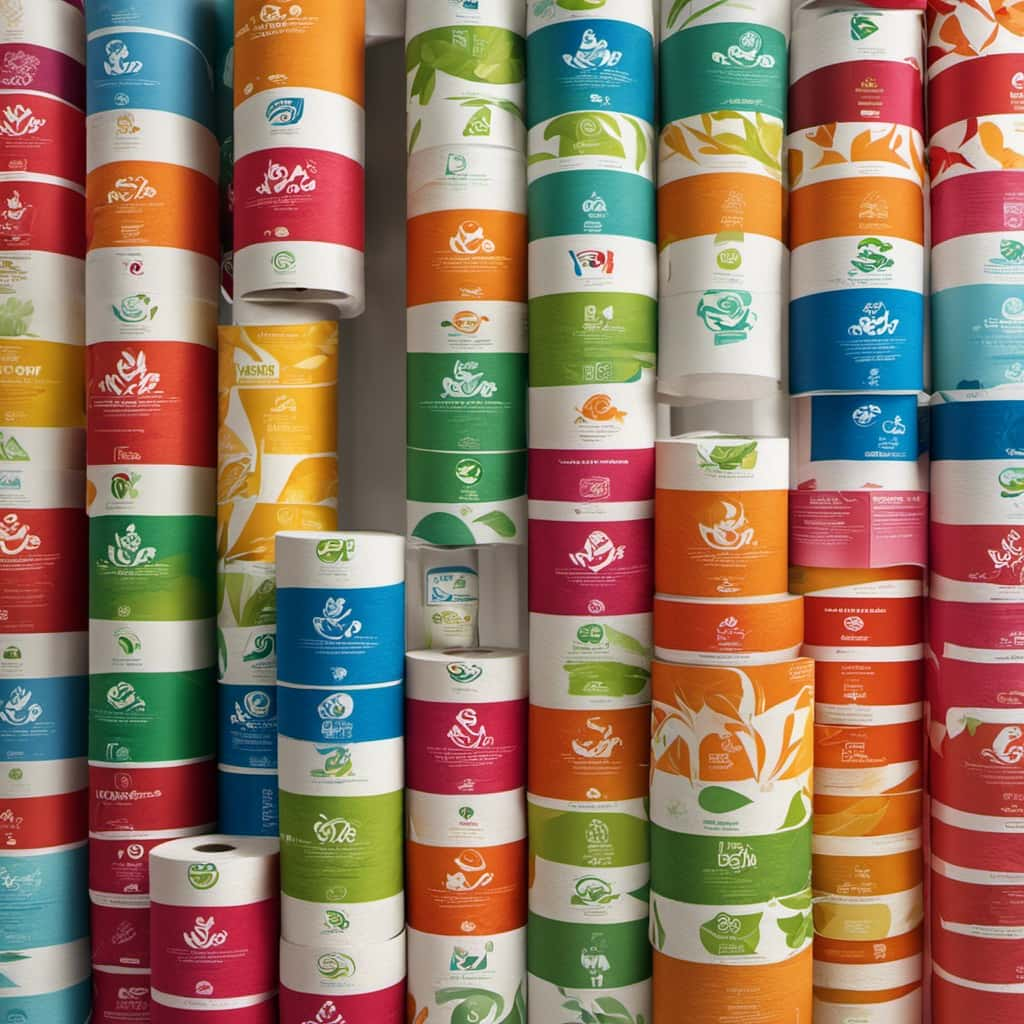
Frequently Asked Questions
Can I Flush Wet Wipes Down the Toilet Instead of Toilet Paper?
We flush toilet paper, but wet wipes should not be flushed. Proper disposal of wet wipes is important to prevent clogs and damage to plumbing systems. Always throw them away in the trash.
Are Bidets a More Environmentally Friendly Alternative to Using Toilet Paper?
Bidets, a more eco-friendly alternative to toilet paper, have pros and cons. While bidets reduce paper waste, they increase water consumption. It’s crucial to weigh the environmental impact of bidets before making a decision.
Is It Safe to Flush Facial Tissues Down the Toilet?
When considering facial tissue disposal, it’s essential to address the environmental impact of flushing tissues. Although it may seem convenient, flushing facial tissues down the toilet can lead to clogs and damage to sewage systems.
What Are Some Alternatives to Toilet Paper That Can Be Flushed?
When it comes to eco-friendly toilet paper alternatives, reusable toilet paper is gaining popularity. It provides a sustainable option that can be washed and reused. This not only reduces waste but also saves money in the long run.

How Long Does It Take for Toilet Paper to Decompose in Water?
Toilet paper takes approximately 2-4 weeks to decompose in water. This decomposition rate can vary depending on factors such as water temperature and quality. Proper disposal of toilet paper is important to minimize its environmental impact.
Conclusion
In conclusion, when it comes to the disposal of toilet paper, it’s crucial to consider the environmental impact, hygiene considerations, plumbing issues, and waste management.
By flushing toilet paper, we can contribute to wastewater treatment processes, ensuring a cleaner and healthier environment.
However, cultural and regional practices may vary, so it’s essential to respect and understand different perspectives.

Ultimately, making informed choices and practicing responsible toilet paper disposal is key in maintaining a sustainable future.
With an impeccable eye for detail and a passion for bathroom-related, Ava leads our editorial team gracefully and precisely.
Under her guidance, Best Modern Toilet has flourished as the go-to resource for modern bathroom enthusiasts. In her free time, you might find Ava exploring antique shops and looking for vintage bathroom fixtures to add to her collection.
Guides
How Do You Flush Toilets in the Uk Vs Us
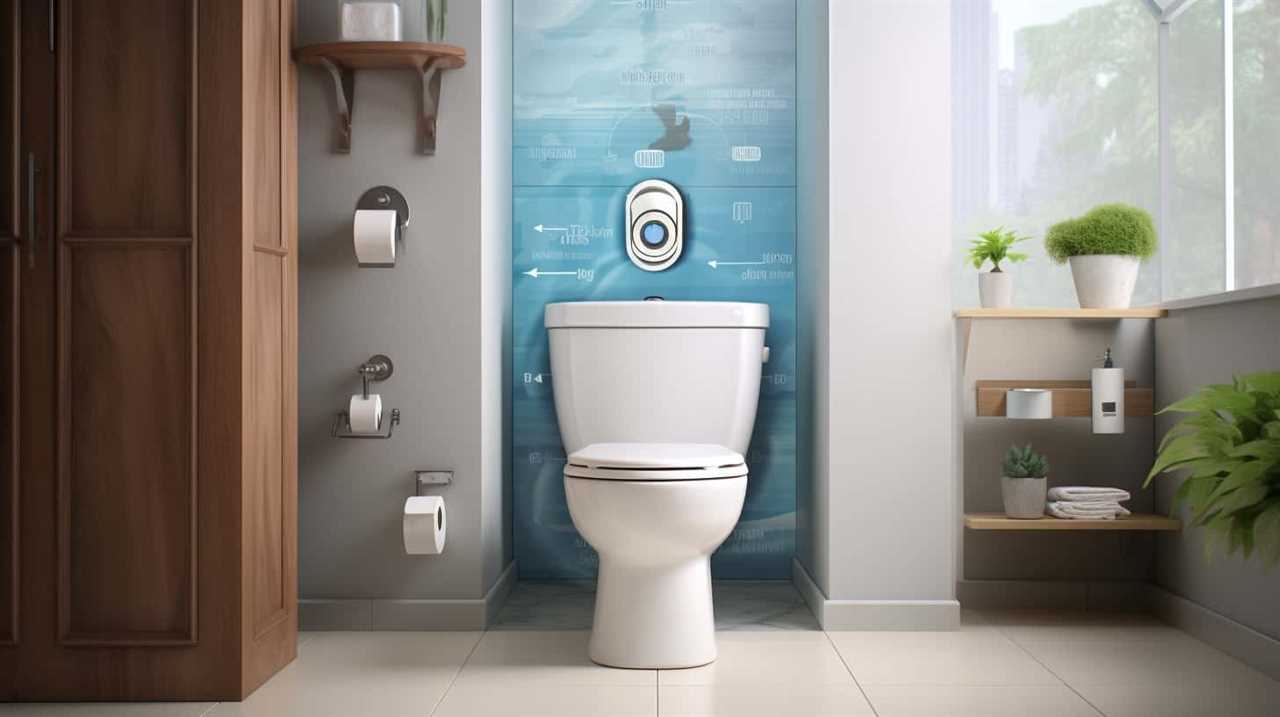
Have you ever thought about the variances in toilet flushing mechanisms between the UK and US? We’re here to give you all the information you need!
In this article, we’ll explore the various toilet systems, terminology variations, cultural practices, and water conservation efforts in both countries.
Additionally, we’ll delve into the exciting innovations and future trends in toilet flushing technology.
So, buckle up and get ready to become a master of toilet flushing in the UK and US!

Key Takeaways
- UK toilets have a separate cistern from the bowl, allowing for a larger volume of water and a more powerful flush, while US toilets have a tank directly attached to the bowl, using a smaller volume of water for each flush and being more environmentally friendly.
- Terminology variations exist for flushing in each country, with ‘flush’ being commonly used in both the UK and US, but ‘pull the chain’ being specific to the UK and ‘push the lever’ or ‘pull the handle’ being common phrases in the US.
- Cultural practices and etiquette around flushing differ, with the UK practicing water conservation by following the rule ‘if it’s yellow, let it mellow; if it’s brown, flush it down’, while the US prioritizes cleanliness and hygiene by flushing the toilet after every use.
- Both the UK and US have implemented regulations limiting the amount of water used per flush, with maximum flush volumes set at 6 liters (UK) and 6.1 liters (US). Dual-flush toilets, offering partial flush for liquid waste and full flush for solid waste, are common in both countries.
Different Toilet Systems in the UK and US
In the UK and US, we have different toilet systems. The design and functionality of toilets vary between these two countries due to differences in plumbing regulations.
In the UK, toilets typically have a cistern that’s separate from the bowl. This design allows for a larger volume of water to be stored, resulting in a more powerful flush.
On the other hand, in the US, toilets usually have a toilet tank that’s directly attached to the bowl. This design uses a smaller volume of water for each flush, which is more environmentally friendly. The plumbing regulations in each country dictate the water consumption and efficiency standards for toilets.
Now, let’s explore the terminology variations for flushing in each country.
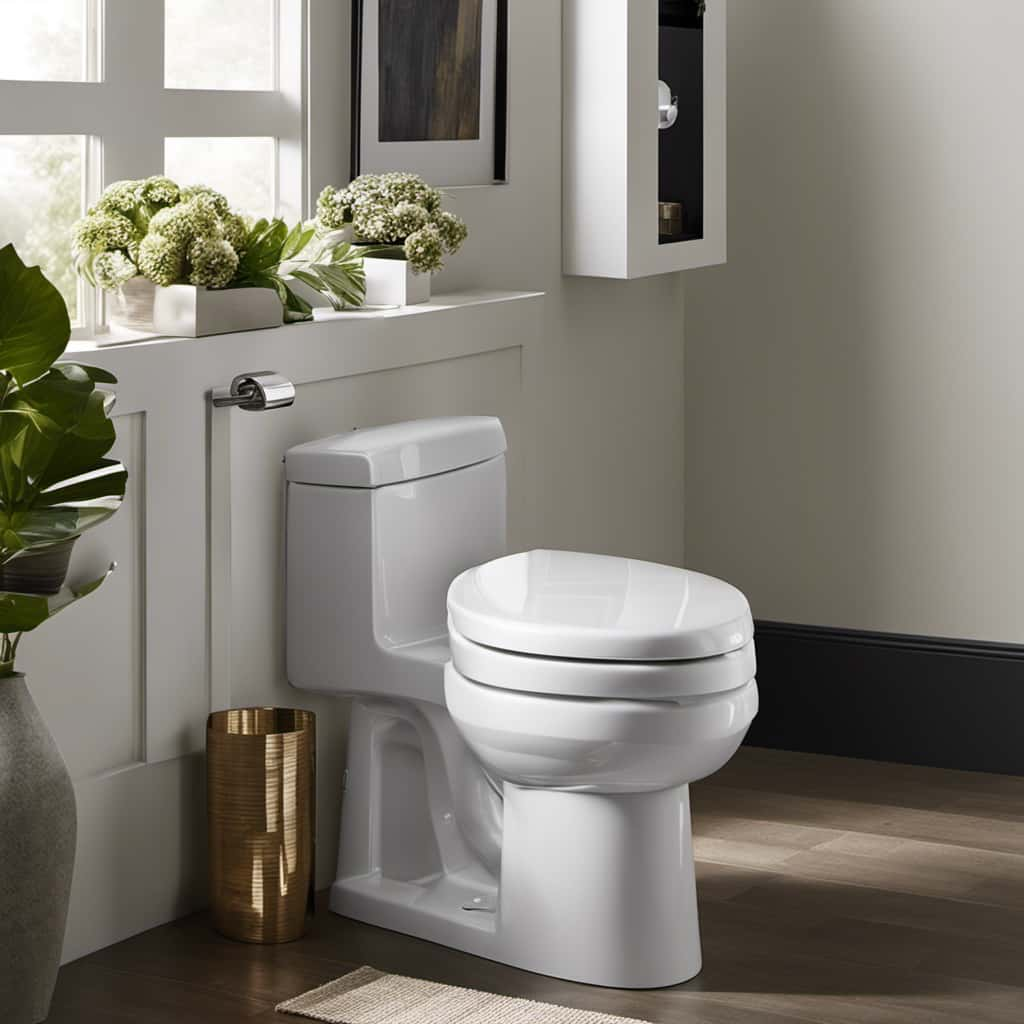
Terminology Variations for Flushing in Each Country
Now let’s delve into the differences in terminology for flushing between the UK and the US. Understanding the terminology differences is crucial to grasp the historical evolution of toilet systems in each country. Here is a breakdown of the terminology variations:
In the UK:
- ‘Flush’ is the most common term used to describe the action of emptying the toilet bowl.
- ‘Pull the chain’ refers to the older mechanism where a chain is pulled to release the water.
In the US:
- ‘Flush’ is also the primary term used, but there are some regional variations.
- ‘Push the lever’ or simply ‘pull the handle’ are commonly used phrases to describe the action of flushing.
These terminology differences reflect the evolving language and cultural practices surrounding toilet systems in each country.

Now, let’s explore the cultural practices and etiquette around flushing.
Cultural Practices and Etiquette Around Flushing
Let’s now delve into the cultural practices and etiquette surrounding flushing toilets in the UK and the US.
Cultural differences play a significant role in the way individuals approach flushing. In the UK, it’s customary to follow a ‘if it’s yellow, let it mellow; if it’s brown, flush it down’ rule. This practice aims to conserve water, reflecting the British value of environmental responsibility.
On the other hand, in the US, the cultural norm is to flush the toilet after every use, emphasizing cleanliness and hygiene. This difference in approach can be attributed to various factors, including historical influences, infrastructure, and societal norms.
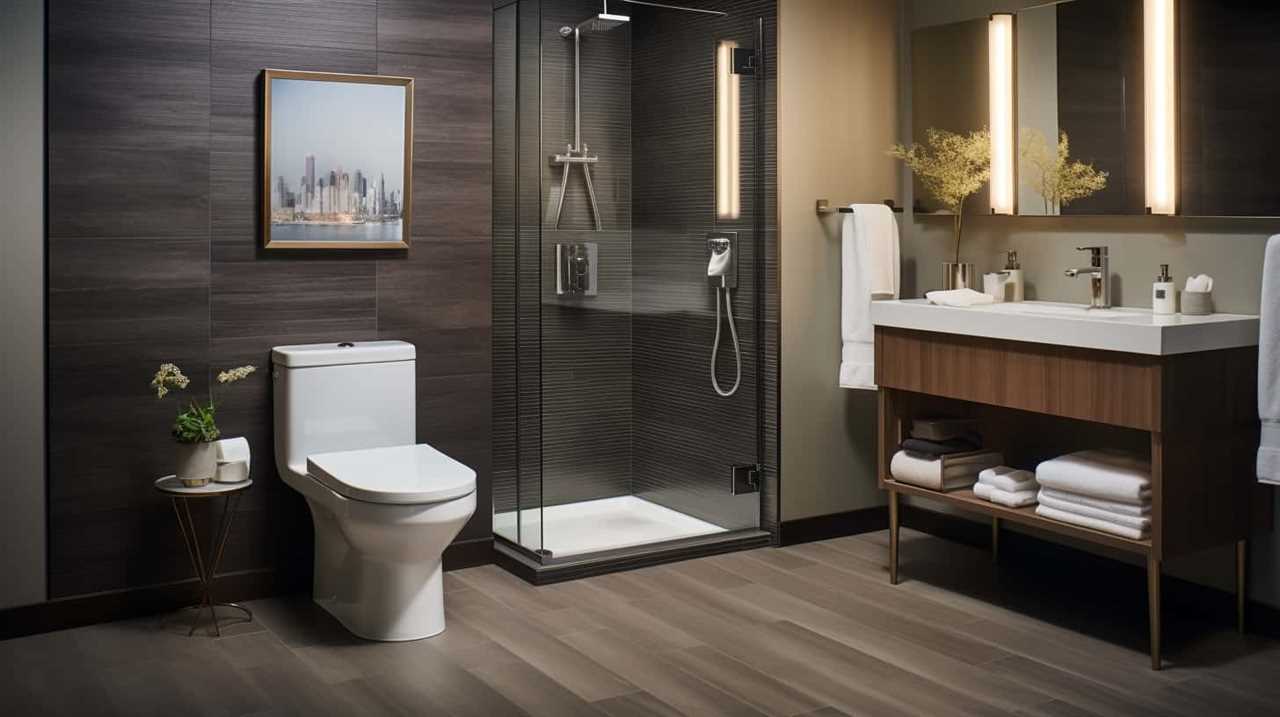
While the UK’s practice reduces water consumption, the US prioritizes sanitation. It’s important to understand and respect these cultural differences and consider their environmental impact when discussing flushing practices.
Water Conservation Efforts in Toilet Flushing
We prioritize water conservation by actively promoting efficient flushing methods in both the UK and the US. To achieve this, toilet flushing regulations have been put in place to limit the amount of water used per flush.
In the UK, toilets are required to have a maximum flush volume of 6 liters (1.6 gallons), while in the US, the limit is set at 6.1 liters (1.6 gallons). Additionally, both countries have implemented dual-flush toilets, which offer a partial flush for liquid waste and a full flush for solid waste.
These measures aim to reduce the environmental impact of flushing by conserving water without compromising hygiene.
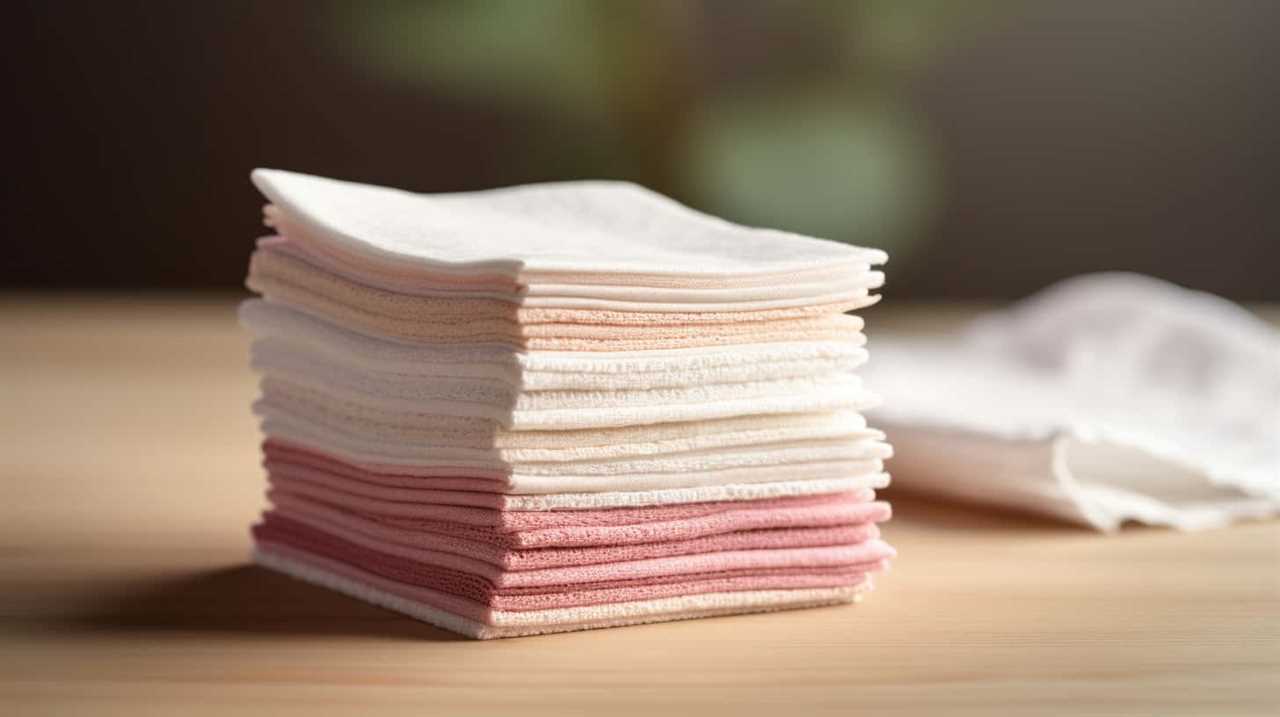
As we look towards the future, innovations and future trends in toilet flushing technology will continue to improve water efficiency and sustainability.
Innovations and Future Trends in Toilet Flushing Technology
Continuing the discussion on water conservation efforts, we’ve witnessed significant advancements in toilet flushing technology, paving the way for innovative and sustainable solutions.
One prominent innovation in this field is the development of smart toilets. These toilets are equipped with advanced sensors and technology that allow for more precise and efficient flushing. Smart toilets are designed to automatically adjust the amount of water used for each flush based on the specific needs of the user. This not only reduces water consumption but also ensures effective waste removal.
Another promising innovation is the introduction of self-cleaning toilets. These toilets utilize special coatings and materials that prevent the build-up of bacteria and waste, reducing the need for manual cleaning. Self-cleaning toilets not only save time and effort but also promote better hygiene and sanitation.
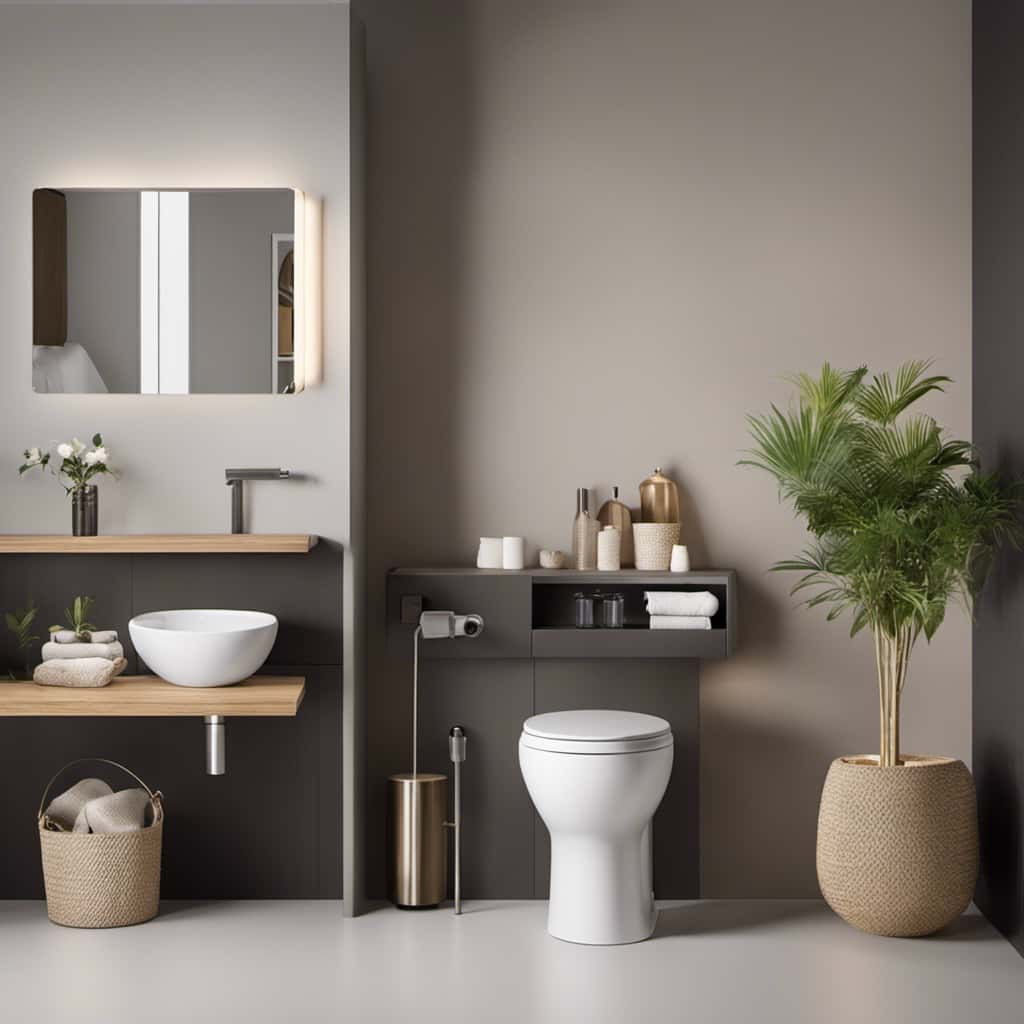
With the continued progress in toilet flushing technology, we can expect even more exciting and sustainable innovations to come.
Conclusion
In conclusion, it’s clear that the UK and US have their own unique ways of flushing toilets. While the terminology may vary, one thing remains constant: the importance of proper flushing etiquette.
As we continue to make strides in water conservation efforts, it will be interesting to see what innovations and trends emerge in toilet flushing technology.
So, next time you find yourself in the bathroom, take a moment to appreciate the fascinating world of toilet flushing. It’s a topic that surely won’t be flushed away anytime soon!
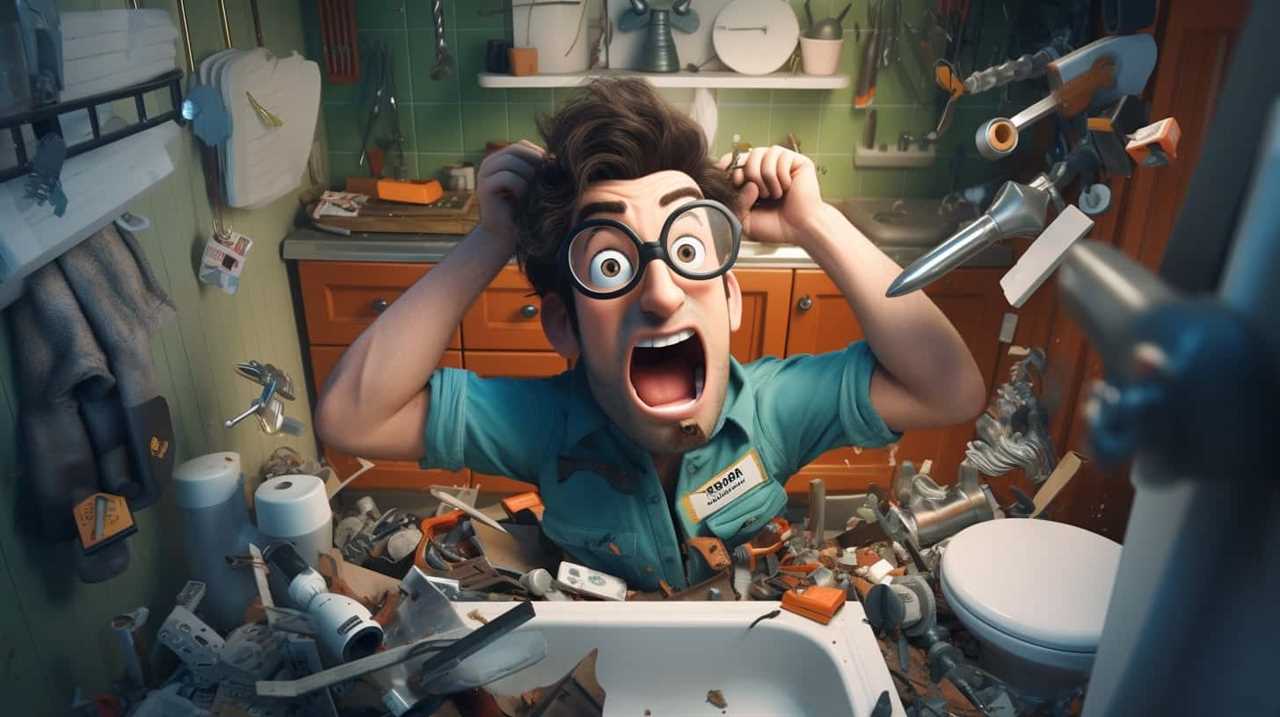
With an impeccable eye for detail and a passion for bathroom-related, Ava leads our editorial team gracefully and precisely.
Under her guidance, Best Modern Toilet has flourished as the go-to resource for modern bathroom enthusiasts. In her free time, you might find Ava exploring antique shops and looking for vintage bathroom fixtures to add to her collection.
-

 Bathroom Enhancements3 months ago
Bathroom Enhancements3 months agoWill Hot Bath Lower Blood Pressure
-

 Reviews2 months ago
Reviews2 months agoLDian Smart Toilet Review [2024]
-

 Reviews3 months ago
Reviews3 months agoKohler Innate Smart Toilet Review [2024]
-

 Bathtub2 weeks ago
Bathtub2 weeks agoAre Clorox Toilet Wand Refills Septic Safe
-

 Reviews3 months ago
Reviews3 months agoKohler NUMI 2.0 Smart Toilet Review [2024]
-

 Reviews3 months ago
Reviews3 months agoCANEST Smart Toilet Review: The Ultimate Bathroom Upgrade [2024]
-

 Toilet Types3 months ago
Toilet Types3 months agoAre Bleach Tablets Bad for Your Toilet
-

 Reviews3 months ago
Reviews3 months agoWoodbridge B0970S Smart Bidet Toilet Review [2024]





















